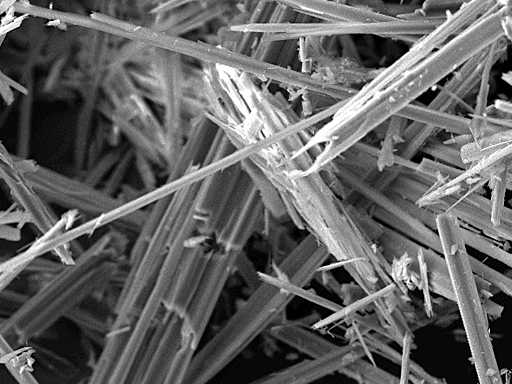Blood test to detect mesothelioma
Using new technology, an international research team has created a protein signature for lung cancer caused by asbestos fibres that shows how this illness might be detected early in future.

Asbestos is a ticking time bomb. Even the finest fibres of this material penetrate deep into the lungs and can trigger a serious, usually fatal form of lung cancer: mesothelioma. However, several decades can pass between contamination with asbestos and the outbreak of the disease. During this long period, the subsequent affliction often goes undiscovered and, using today’s detection methods, medicine is only able to diagnose a mesothelioma at a late stage. Not surprisingly, the prospects for the patient are poor.
A set of biomarkers
An international team of researchers headed by Bernd Wollscheid, a group leader at the Institute of Molecular Systems Biology, has now devised a new, non-invasive way to diagnose mesothelioma. Their approach could enable this type of cancer to be detected early based on a blood test in future. The researchers have just published the results of their study in the journal Clinical Proteomics.
Until now, usually only the protein mesothelin was used as a biomarker to detect this strain of the disease. However, it is not specific enough as other types of cancer often produce it in greater quantities, which diminishes its diagnostic value.
The research team has now identified six other molecules that come into question as a signature for the presence of a mesothelioma: glycoproteins (proteins that have been modified with sugar molecules). They are found on the surface of cancer cells but can also enter the blood stream.
Powerful method of measuring proteins
Finding the right glycoproteins that indicate a mesothelioma was more than the proverbial search for the needle in a haystack as many different types of protein are present in blood serum. Consequently, the first author of the study, physician Ferdinando Cerciello, started by studying and identifying hundreds of different surface proteins that might potentially be present in the blood based on model cell lines.
In a second step, he had to narrow down this selection and confirm the biomarker candidates in the serum of mesothelioma patients. In order to be able to fish these candidates out of the sea of proteins, Cerciello devised a test approach based on so-called selected reaction monitoring (SRM) – an extremely precise and quantitative method of measuring proteins that was honed at ETH Zurich by the group headed by Ruedi Aebersold, a professor of molecular systems biology, in the last five years for protein research.
SRM involves programming a mass spectrometer with specific data on hypothetical peptides, i.e. the protein fragments of the cancer cell’s surface proteins examined, prior to the measurement. The device then searches for these proteins in the biological sample – in this instance, blood serum.
This enabled the researchers to identify fifty-one biomarker candidates without the antibodies that were previously necessary and with the aid of their cancer model cell lines and examine them quantitatively. Six of these surface glycoproteins ultimately stood up to the statistical validation with patient samples and healthy test subjects.
Many more measurements necessary
For the time being, the head of the study, Bernd Wollscheid, prefers to remain cautious: in order to really be able to use the protein signature found in 200 patients as a diagnostic tool, additional measurements on a larger number of patients and control groups are necessary. Although the protein signature can differ between mesothelioma-sufferers and healthy people, it still remains unclear whether they rule out other lung complaints such as chronic infections. “In order to cement our potential biomarker panel and obtain the approval of the authorities, we need to test a few thousand patients,” he says. “However, such an endeavour is beyond our development focus and budget for now.” Consequently, the researcher does not expect the glycoproteins found to be used in hospitals to diagnose the dangerous lung cancer anytime soon.
Thus far, the development of viable biomarkers has often been delayed by the low number of suitable samples, which also cover timespans that are too short. “In order to be in a position to develop marketable biomarkers, we need special biobanks, for instance, where patient samples from long time series before and after the diagnosis of a disease can be collected and retained for research purposes,” adds the biochemist.
Moreover, a close connection between the different disciplines and institutes is also necessary to carry projects like early mesothelioma detection through to a successful conclusion. Interfaces between hospitals and basic research are especially important here. For Wollscheid, the Zurich University Medicine initiative is thus a step in the right direction. “Thanks to this network, a suitable structure for such research projects is now being developed right here in Zurich,” says the ETH-Zurich researcher.
System biologists from ETH Zurich, oncologists from Zurich University Hospital and biostatisticians from Purdue University in the USA collaborated closely on the early mesothelioma detection project. Research on such complex topics can only be accomplished if all those involved pull together to form structures that go beyond the confines of the institutions.
Reference
Cerciello et al. Identification of a seven glycopeptide signature for malignant pleural mesothelioma in human serum by selected reaction monitoring. Clinical Proteomics 2013, 10:16 DOI: external page 10.1186/1559-0275-10-16
Comments
No comments yet